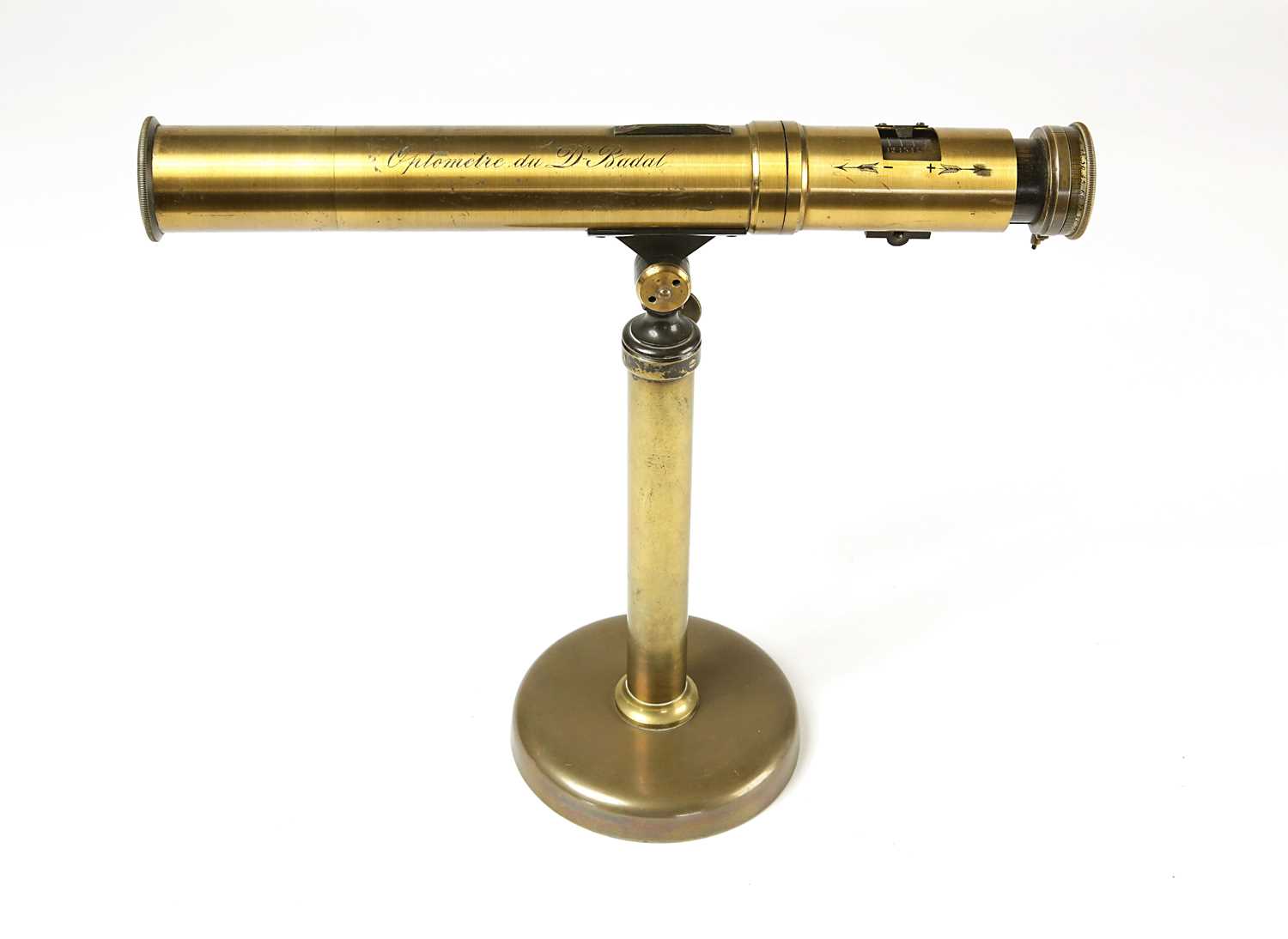1st May, 2000 12:00
Instruments of Science and Technology
193
A Brass Optometer by Dr. Jules-Antoine Badal, Ca. 1876.
A Brass Optometer by Dr. Jules-Antoine Badal.
Bordeaux, France, circa 1876.
Cylindrical brass tube with glass optics, on stand. Marked Optometre du Dr. Badal. Device for measuring myopia and hyperopia.
Measurement: L. 30 cm.
catalogue Note: Dr. Jules-Antoine Badal (1840-1929), a French ophthalmologist (Ophthalmology is the branch of medicine responsible for the treatment of diseases of the eye and its appendages), was the first holder of the chair of ophthalmology in Bordeaux.
This optometer dates from the late 1800s. The optometer was used with various lenses to determine the refraction of the eye. Refraction means the extent to which light is bent by an individual’s eye. The result can determine how short sighted or long sighted they are, and the strength of spectacles required.
In the second half of the 1800s, ophthalmologists also devised instruments to measure the separate components of vision. Dr Jules Badal developed this instrument in 1876. It was based on an optometer invented by William Porterfield in 1759.
Literature: See Science Museum Group, Object Number: A625218
Estimate: 80-100
Sold for €488
A Brass Optometer by Dr. Jules-Antoine Badal.
Bordeaux, France, circa 1876.
Cylindrical brass tube with glass optics, on stand. Marked Optometre du Dr. Badal. Device for measuring myopia and hyperopia.
Measurement: L. 30 cm.
catalogue Note: Dr. Jules-Antoine Badal (1840-1929), a French ophthalmologist (Ophthalmology is the branch of medicine responsible for the treatment of diseases of the eye and its appendages), was the first holder of the chair of ophthalmology in Bordeaux.
This optometer dates from the late 1800s. The optometer was used with various lenses to determine the refraction of the eye. Refraction means the extent to which light is bent by an individual’s eye. The result can determine how short sighted or long sighted they are, and the strength of spectacles required.
In the second half of the 1800s, ophthalmologists also devised instruments to measure the separate components of vision. Dr Jules Badal developed this instrument in 1876. It was based on an optometer invented by William Porterfield in 1759.
Literature: See Science Museum Group, Object Number: A625218
Estimate: 80-100
Auction: Instruments of Science and Technology, 1st May, 2000
Hessink's proudly presents the sale of a fine single owner collection of Instruments of Science and Technology. The sale offers you a great opportunity to purchase beautiful selection of globes, microscopes, telescopes, medical, drawing, surveying and navigational instruments from famous instrument makersfrom the 17th to the 20th century.
